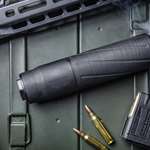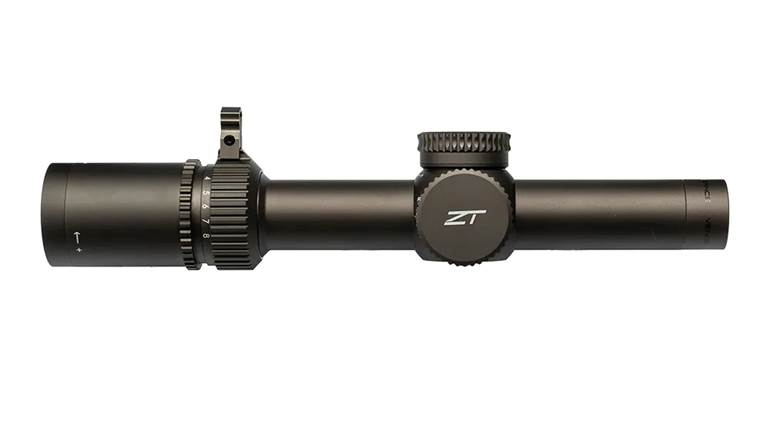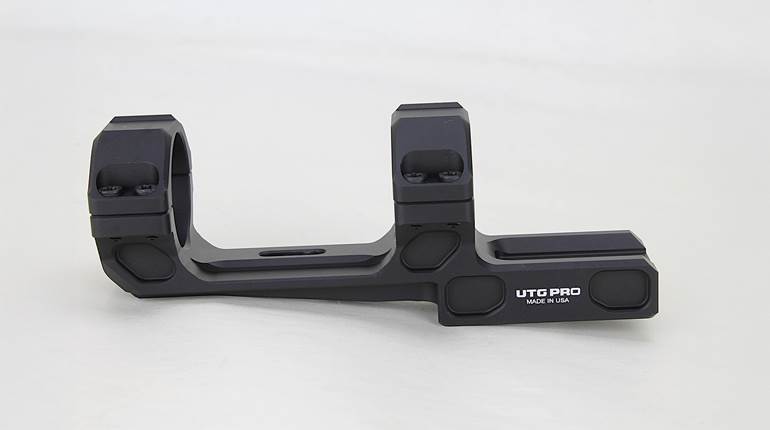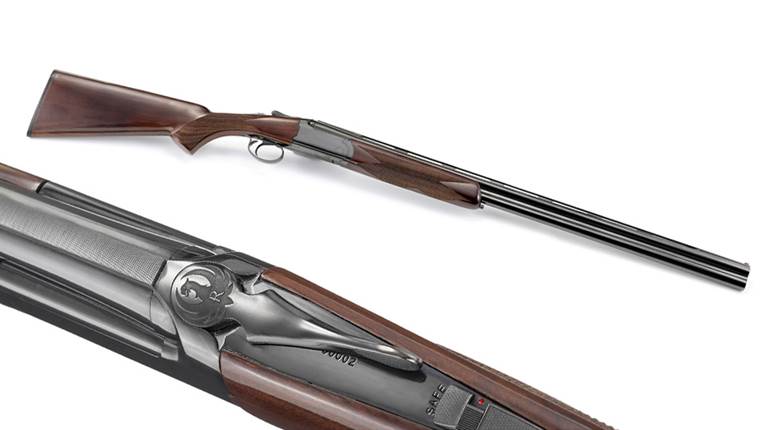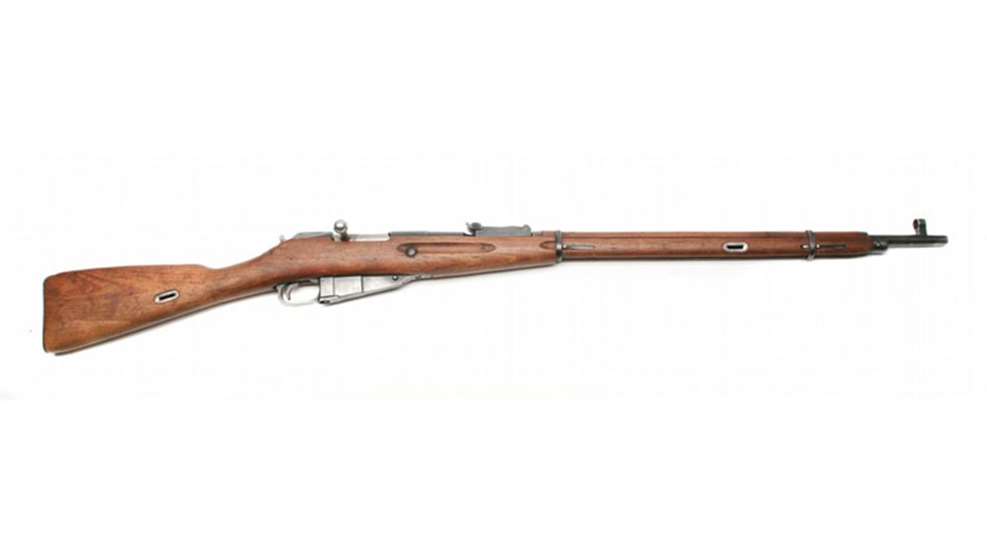
The Russo-Ottoman War of 1877–1878 lasted just a bit more than 10 months. While the Russian coalition had about half the manpower of the Turks, and the Turks had several advantages in terms of weapon technology, the Russians were much more experienced fighters, thus enabling them to emerge victorious. Still, the Russians were really burdened by the single-shot Berdan rifles and their 10.7×58 mm R cartridge. The cartridge launched a .43-cal., 370-gr. lead bullet at 1433 f.p.s. With a maximum range of about 300 yards, the cartridge was effective in stopping enemy soldiers, but warfare tactics were evolving quickly. The future was in rifles capable of laying down a base of fire, along with cartridges capable of longer range and less prone to black powder fouling.
Trials commenced in 1889, with three examples under consideration. The Russians have a long history of using military officers as lead designers for their weaponry. Captain Zinoviev, an otherwise largely unknown officer, submitted a “3-line”—7.62 caliber—rifle that proved to be a distant third in the trials. A line, by the way, is 0.10" or 2.54 mm, ergo 3 lines is 7.62 mm or .30 caliber. Another officer, Captain Sergei Ivanovich Mosin of the Imperial Army, submitted his own 3-line rifle, while Belgian designer Léon Nagant submitted a 3.5-line (.35 caliber or 9 mm) rifle.
Two years later, the commission still had no clear choice. The Nagant design intrigued them, but its poor quality and complex design gave the members some heartburn. After renaming the governing body to Commission for Creation of the Small-Bore Rifle, orders were given to the contributors to have another go at it in Round 2. The renamed commission even had the foresight to establish a written criterion for the rifle it wanted. New tests were conducted, and—amazingly—the commission found the Mosin 3-line design met its needs the best. The rifle would be officially known as the 3-line rifle M1891—or трёхлинейная винтовка образца 1891 года, if you prefer Cyrillic.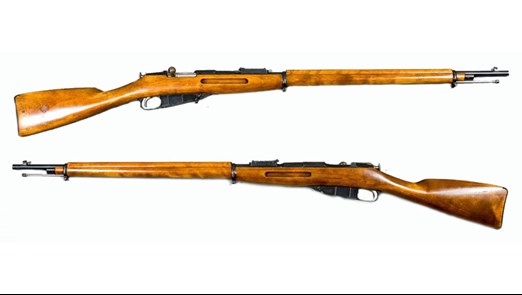
Mosin’s design borrows a little from Paul Mauser’s Gewehr 98 rifle and a bit from the Lee-Enfield, but with some contrarian changes to ensure its status as a Russian-designed rifle. Like the ’98, the Mosin rifle locks up via two relatively massive locking lugs, with a third safety lug being the root of the bolt handle. But to be different, Mosin had his lugs lock horizontally instead of vertically. Also, whereas the Mauser bolt body is a one-piece forging, Mosin had to make his in three pieces. Similar to the Lee-Enfield though, the bolt head portion of the bolt is interchangeable. The Mauser safety disengages the firing-pin assembly from the trigger sear via a lever at the rear of the bolt. Mosin used a knob to pull the firing-pin assembly away from the trigger sear, and hold it in a depression milled into the bolt body. It is very positive, but equally slow to operate. A lump on the sear serves to restrain the bolt from coming out of the rifle during cycling. To remove the bolt, simply pull the trigger and pull the bolt rearward.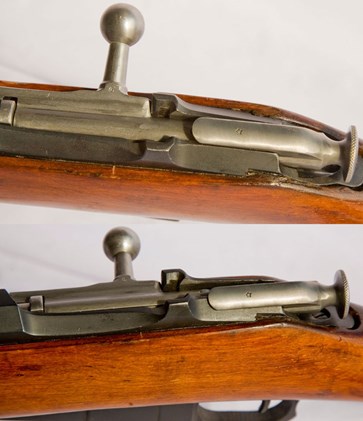
During the second trials it was discovered that the Mosin rifle was rather susceptible to double feeding of cartridges from the magazine, resulting of course, in the failure of the rifle to feed and fire. The Nagant offering had an interrupter as a part of the extractor—a feature that he “borrowed” from an earlier Mosin design. Nagant applied for a patent on the interrupter, then turned around and threatened to sue Russia in international court for patent infringement. Nagant eventually prevailed and received the same bonus as Mosin once the final contract was completed. It was because of this legal back-and-forth that Tzar Alexander III specifically excluded Mosin’s name and Russia from the final naming of the rifle. The term Mosin-Nagant came about partly because of Nagant using it to publicize himself via Western writings.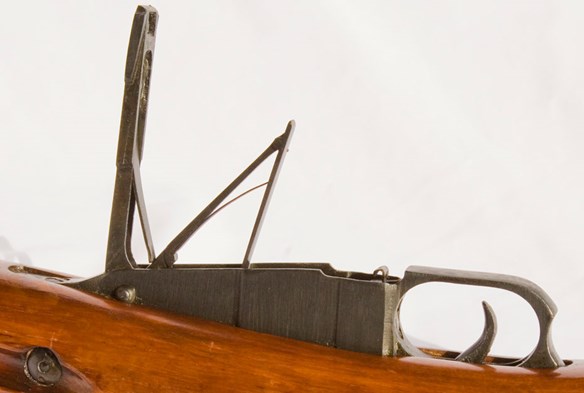
The Model 1891 is fed from a milled, single-column, five-round magazine attached to the receiver. It is not detachable but has a floorplate that can be opened via a latch on its bottom. During its long tenure, the Model 1891 and its derivatives have been chambered in four cartridges: 7.62x54 mm R, 7.62x53 mm R (Finnish), 7.92x57 mm Mauser (a.k.a. 8 mm Mauser) and 8x50 mm R Mannlicher. Of those, only the 7.92x57 mm Mauser is a rimless cartridge. Consequently, the rimmed versions must be loaded carefully into the magazine so that the rim of each cartridge rests ahead of the rim of the cartridge below it. The receiver is cut to accept five-round stripper clips. Cartridges in the stripper clip are situated so that the rim of each cartridge rests ahead of the one below it. The trick is to remember the cartridges will be slightly askew in the clip, and to use the clip properly, the cartridges must be loaded into the magazine with the bullets in the downward position.
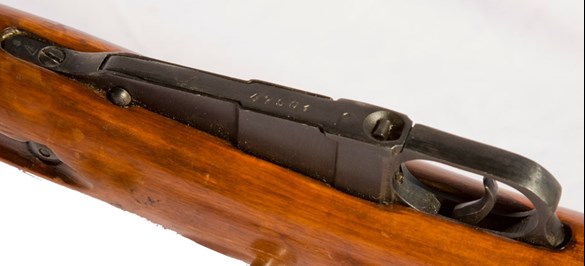
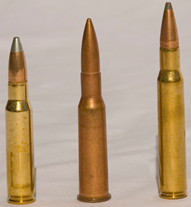 While the Model 1891 may have been chambered in four cartridges, by far the most prevalent is the 7.62x54 mm R. The parent case is the 8×52 mm R Mannlicher, a cartridge dating to the cusp of the black powder-smokeless powder transition. Despite the 7.62 nomenclature, bullet diameter is actually 7.92 mm or .312". Standard bullet weight is 11.7 grams or 171 grains. Muzzle velocity from a 29-inch barrel is around 2600 f.p.s. putting it somewhere between a .308 Win. and a .30-06. It has a reputation for excellent accuracy, and is in use to this day, mostly as a cartridge for sniper rifles.
While the Model 1891 may have been chambered in four cartridges, by far the most prevalent is the 7.62x54 mm R. The parent case is the 8×52 mm R Mannlicher, a cartridge dating to the cusp of the black powder-smokeless powder transition. Despite the 7.62 nomenclature, bullet diameter is actually 7.92 mm or .312". Standard bullet weight is 11.7 grams or 171 grains. Muzzle velocity from a 29-inch barrel is around 2600 f.p.s. putting it somewhere between a .308 Win. and a .30-06. It has a reputation for excellent accuracy, and is in use to this day, mostly as a cartridge for sniper rifles.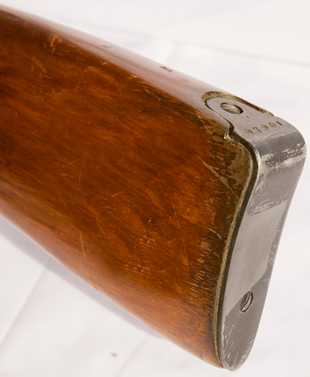
Stocks are made from utility grade walnut. They are typical military stocks of the period, featuring a fore-end that extends to about 4 inches from the muzzle and an accompanying hand guard on top of the barrel, held in place by a pair of barrel bands. The rifle even has what is commonly referred to as a carbine buttplate, with an extension inleted into the heel of the buttstock and a teardrop profile that spreads the recoil over a larger area. There is a pair of sling mounts fore and aft. The stock has a recoil pin that penetrates both sides of it where the recoil lug on the receiver mates. Finally, there is a groove along the bottom of the fore-end that serves to hold a cleaning rod.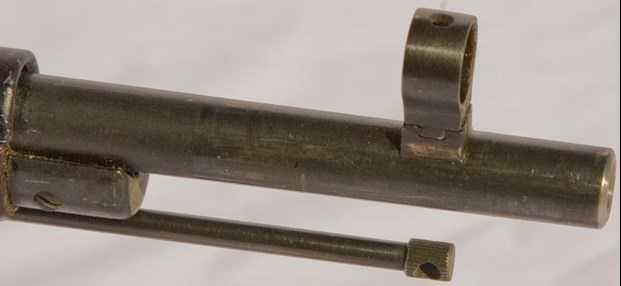
Sights consist of a blade front dovetailed into a base that appears silver soldered to the barrel about 1 3/8 inches from the muzzle. A ladder-type rear sight graduated to an ambitious 2900 meters completes the arrangement.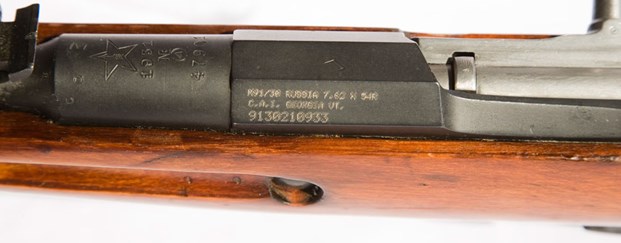
The receiver is blued, and the front receiver ring is hexagonal, though some of the surplus guns exported to the U.S. after World War II have been ground to round profile. The bolt and its components were left white.
As with many of its firearms, the Soviet Union used the Model 1891 as a sort of currency to help pay for its ambitious desire to acquire more nations under its fold. Many such as Tula, Izhevsk, Sestroryetsk, Manufacture Nationale d’Armes de Châtellerault, Remington and New England Westinghouse, alongside others, have produced some 37 million-plus copies of the Model 1891 during its 127-year production, which continues to this day.
With that many produced and the number of companies building it, the Model 1891 has had numerous variations. In the Soviet Union alone, no less than 10 variations are known. Estonia has cataloged another four, and Finland added an additional fourteen. The Czechs had three variations, and the Chinese, Hungarians, Romanians, Polish, and even the American added another fourteen variants, all told. The most common variation seen is the 1891/30, produced in the Soviet Union from 1930 to 1945. It has seen service in no less than 38 wars and conflicts, dating from its origin to today.
Here in the U.S., the Mosin-Nagant has been a popular surplus rifle. Typically, the Model 1891/30 is the most prevalent, and it has earned the nickname of being a “poor man’s sniper rifle.” After World War II, examples could be found stacked in barrels at surplus outlets for less than 20 bucks. Today however, a shooter grade will lighten your wallet by at least $250, and pristine collector examples can fetch more than a grand. The Mosin-Nagant is like a lot of Russian firearms: somewhat crude in design, but very well made—especially those made in Tula and Izhevsk—and very dependable. If you are a beginning collector looking for a relatively easy way to get into collecting, a Mosin-Nagant is worth considering.
Additional Reading: Exploded View: Mosin-Nagant Model 1891 Family of Rifles












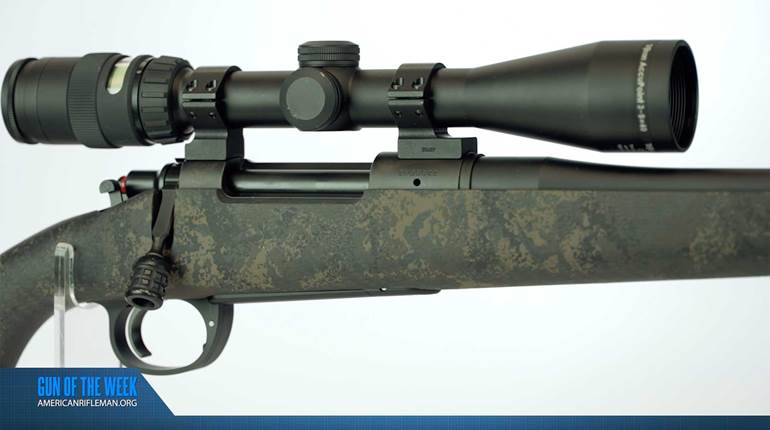
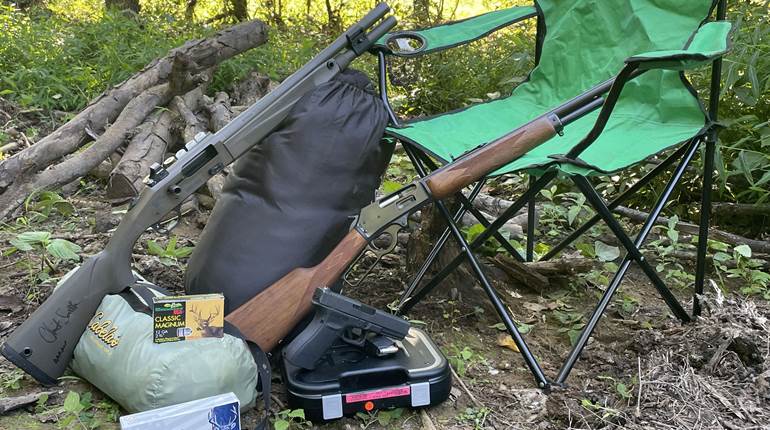

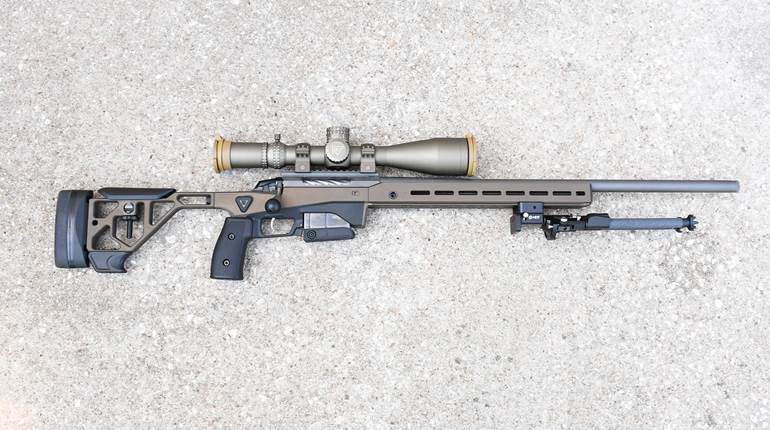

![Winchester Comm[94]](/media/1mleusmd/winchester-comm-94.jpg?anchor=center&mode=crop&width=770&height=430&rnd=134090756537800000&quality=60)
![Winchester Comm[94]](/media/1mleusmd/winchester-comm-94.jpg?anchor=center&mode=crop&width=150&height=150&rnd=134090756537800000&quality=60)

